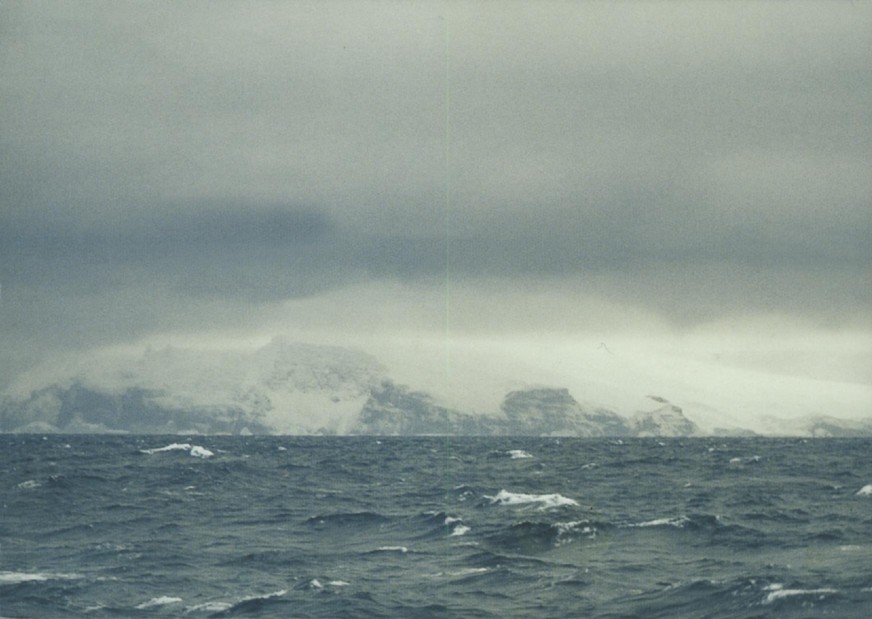
IMMAGINI RELATIVE AI MIEI MESSAGGI
per il FORUM FILATELIA e FRANCOBOLLI pagina 174
FORUM CONTINUA 174:
FILATELIA DELLE ISOLE DESERTE
Ciao a tutti! Questa pagina nasce dopo una discussione avuta sul forum, relativamente alla collezione ASFE e poi parlando di isole. La discussione è riportata a fondo pagina. Qui trattiamo un argomento che ci sta molto a cuore. Esattamente "La filatelia delle isole deserte". Chiaramente è un "nonsense" ... ma come vedrete solo sino ad un certo punto. Purtroppo l'articolo è in inglese, ma penso che sia comprensibile, sopratutto se poi guardate tutti gli esempi a colori che ci sono nel file PDF più sotto caricato. In fondo mettiamo una dozzina di postcard di alcune delle isole nominate nel'articolo.
L'articolo è apparso sulla rivista di Londra "The Cinderella Philatelist" di aprile 2010:
Desert Islands Philately
Final version. Published on "The C.P." April 2010 issue
I love remote and desert islands of the world. So a few years ago I began to collect some philatelic examples. Now I want to re-organize my collection, and also to write a short article to explain to other collectors what the basis of it is and what type of material is available on the market.
Collecting stamps and postal material of desert islands seems to be crazy or at least funny. But if you want to develop a research project - not very easy indeed - and to face new areas of philately, both for fun or in order to give a peculiar new contribution to our hobby, well, my friends, "Desert Islands Philately" looks to be a good task!
We will consider here only existing islands and not fantasy islands. These islands are usually uninhabited, but they could have been visited for any reason by people, and in some case they could have been the location of temporary human settlements.
We can collect different types of philatelic material related to desert islands. We will consider genuine postage stamps, genuine postmarks, letters shipped from those islands or addressed to them, even if there is not an official and fixed postal office. But we surely can add cachets, official local stamps, private local stamps, classic phantoms and modern labels. We will explain in the following sections many of these terms with some examples.
We can start by dividing the philatelic objects in two main categories:
1) Stamps
2) Cancellations, postmarks and cachets
Category 1 could be divided into:
1 a) Genuine local stamps, officially issued and used;
1 b) Genuine local stamps privately issued and used;
1 c) Phantoms and speculative issues, all privately issued.
Category 2 could be divided into:
2 a) Commemorative cancellations of ships that only stopped at or passed an island (patrol/cruise), e.g. cancellations that have nothing to do with the island itself, but just to commemorate a visit.
2 b) Cancellations issued and used for a specific purpose or used for a certain period. They include: expedition cancellations (private or otherwise), weather stations, Loran stations, APO cancellations, temporary post offices. They are cancellations that refer to a certain activity ON the island.
2 c) Cachets applied not on the stamps but on cover, which refer to a desert island. Examples: linear hand stamps with an island name, a map of a cruise route, or a grid with signs of explorers, Galapagos barrel cancellations.
Note: Related to the stamps and the postal service, Dr. Victor Berkovich has suggested more detailed definitions for local posts, phantom posts or bogus-fantasy items.
Without any researched evidence of some connection to the island, an item should be considered a bogus-fantasy. Those with some evidence of the connection to the location, such as private labels issued or made on the island or used privately on the island (expedition labels) or if the producer actually had a strong connection to the island, should be regarded as phantoms. Finally, items available on the island for post ( or at least intended for post) to some part of the general public should be considered local posts.
Here are some samples of material which is available on the market, in order to check the mentioned categories and to better clarify what collectors can obtain:
CATEGORY 1) Stamps:
1 a - Genuine stamps of a country which commemorate such islands with pictures or maps (these are NOT interesting in our research). We could include here also the commemorative issues of private modern local posts (e.g. Hawaii Post with Palmyra commemorative (Fig. 1).
1 a - Genuine local post stamps issued by a country and used for a short period (e.g. Mas Afuera overprint on Chile) (Fig.2).
1 a - Genuine but speculative issues by existing country with the name of a desert island even if the island does not requires stamps (e. g. Redonda stamps) (Fig.3). They are of low interest in this research.
1 b - Genuine local stamps with postal validity issued by private company but not officially recognized (e.g. Clipperton Island locals (Fig.4), Bouvet Oya (Fig.5), Kermadec Island (Fig.6), Cocoanut Plantations at Christmas Island (Fig.7), and Auckland Islands Grant Expedition (Fig.8). We could include here the few stamps issued locally (without the official authorization) in cases of shortage of stamps (e. g. Sombrero Island (Fig. 9).
1 b - Old phantom and phantom overprint st (e. g. Van Demon's-Van Diemen's Land (Fig.10), Gambier overprint (Fig. 11), Oeno/Ducie/Henderson Islands overprint (Fig. 12), Malpelo (Fig. 13).
1 c - Modern labels printed by private expeditions (e. g. Rockall/Waveland Island (Fig. 14- Fig. 15), Snares Islands (Fig. 16).
1. c - Modern printed speculative labels (e. g. Navassa label (Fig. 17), Peter I Island label (Fig. 18) (to be included just as curiosity).
CATEGORY 2) Cancellations, postmarks and cachets:
2 a - Genuine postmarks on cover with the name of the islands or with a field force number. This is a large and very interesting category which includes: Patrol/cruise postmarks with the name of the island in the killer bar. American ships from 1934 until World War Two used to cancel the covers on U.S. stamps with the name of the ship, the date and the name of the island inserted in the killer bars wherever the ship stopped at or sailed past the island (e. g. Christmas Island) (Fig. 19) and French Frigate Shoals (Fig. 19bis).
2 b -Military field force letters to and from a desert island which was the location of forces during wars. (e.g. all the "Island A.P.O.s" used by United States, and letters shipped by soldiers who lived on those islands, e.g. APO 457 of Baker Island (Fig.20). Sometimes an American FPO or a cancellation of another national fleet can be seen instead of an APO.
2 b - Genuine expedition postmarks with official authorization (e.g. Enderby 1921 Shackleton Expedition (Fig. 21), and more recently in 1964 the Coco Island BLUENOSE II expedition (Fig.22).
2.c - ditto but only cachets and not postmarks of expeditions, e.g. many expeditions to Antarctic uninhabited islands such as Scott Island (Fig.23), or prison island administrative stamps such as that of San Lucas Island (Fig.24).
2 b -Temporary official post offices with postmarks, e.g. Pitt Island (Fig.25), Tino Island (Fig.26).
2 b -Letters shipped by temporary weather stations, magnetic observatories, Loran stations, NOAA ship expeditions and any other letters which were shipped by the desert islands with the name of the island as a linear hand-stamp, but with the cancellation of the first available post office, e.g. Palmyra Island with a Honolulu cancellation (Fig.28) and 1946 disputed Swan Island (Fig.29).In this group there are also the Éparses French Indian Ocean Islands (Fig.27): they had weather stations with cachet, but from year 2007 they have permanent post offices.
2 c - Return to sender letters (RTS), addressed to islands without postal facilities, e.g. Kuria Muria in Oman (Fig. 30) and Jarvis Island (Fig. 31).
Finally, I have two pending items:
Rose Island in Italy – an artificial platform which issued private stamps used by mail (Fig.32); its stamp could be considered "carriage labels" as are the stamps of some off-shore British islets. I suppose it is Category 1 b.
Forerunner marks or stampless covers, e.g. Barrel mail at Floreana Island in the Galapagos (Fig.33). I suppose it is Category 2 c.
I will be happy to receive comments, advice - and also criticism; the subject is too young to be considered well defined.
END
Tutte le immagini sono visibili al link qui sotto riportato. You may see all the images at:
DESERT-ISLANDS_PHILATELY IMAGES CLICK HERE!
Carrellata di postcard di isole deserte, nominate nell'articolo e di cui esistono reperti "filatelici". Vengono indicati: il nome, l'oceano dove si trovano e fra parentesi la nazione a cui appartenengono:

Bouvet Island sud Atlantico (Norvegia)
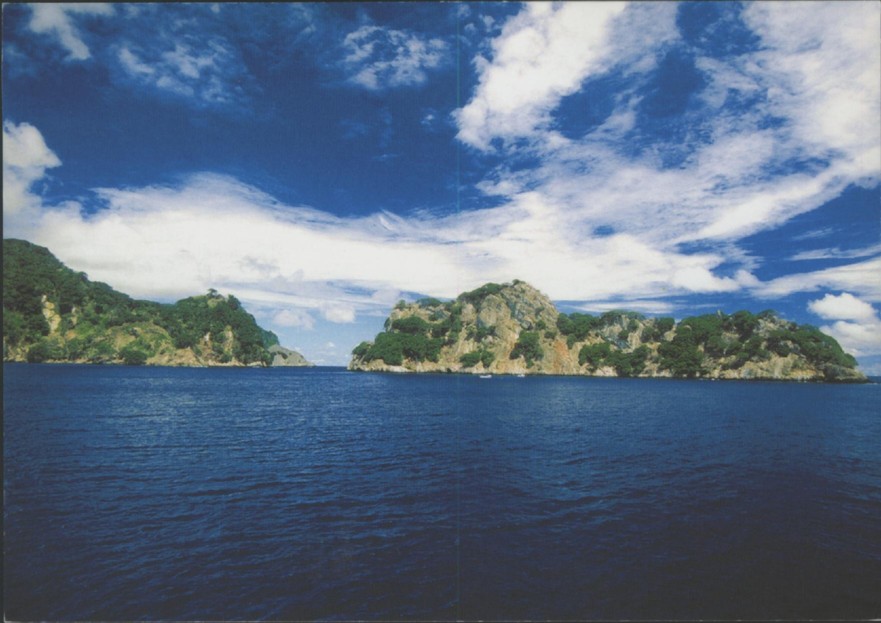
Coco isla Pacifico (Costa Rica)
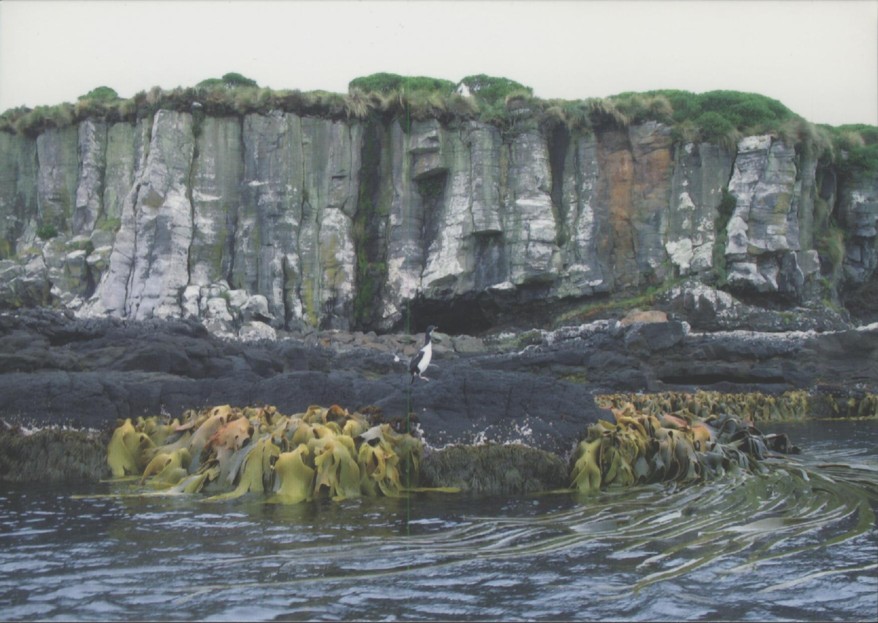
Enderby island subantartica Pacifico (New Zealand)
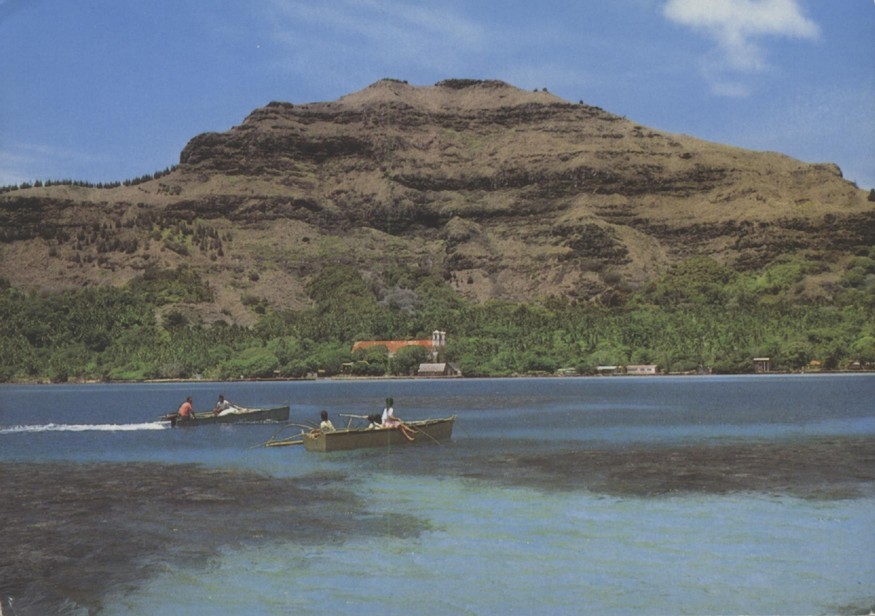
Gambier Pacifico (Francia)
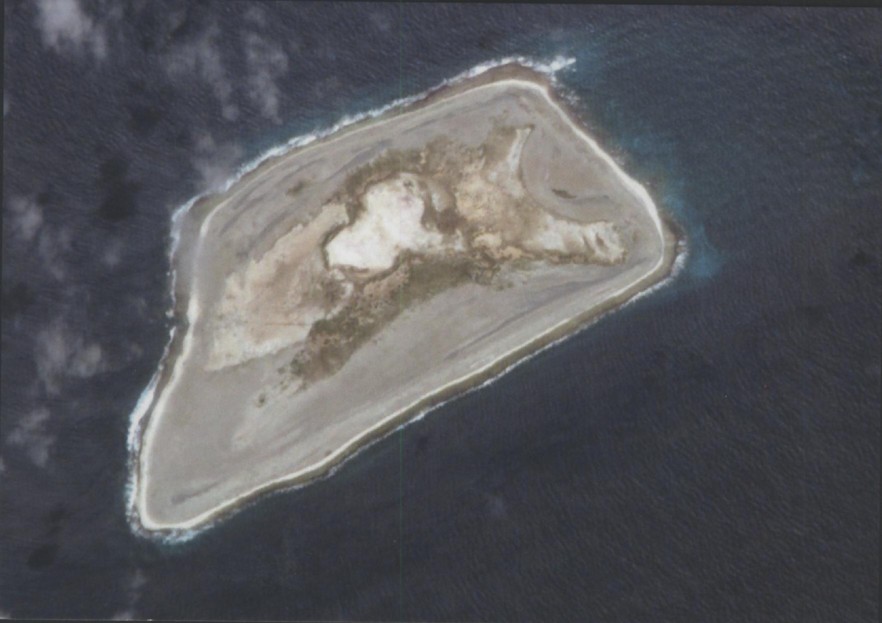
Jarvis Pacifico (USA)
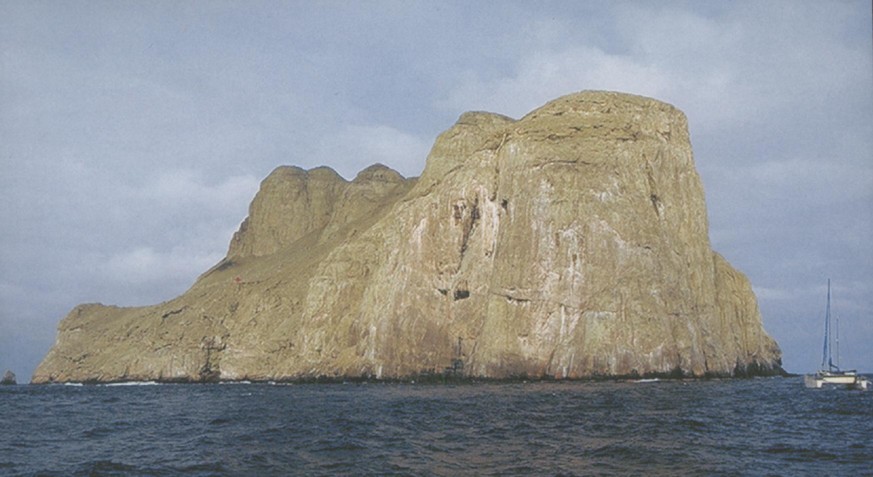
Malpelo Pacifico (Colombia)

Navassa Atlantico (USA)
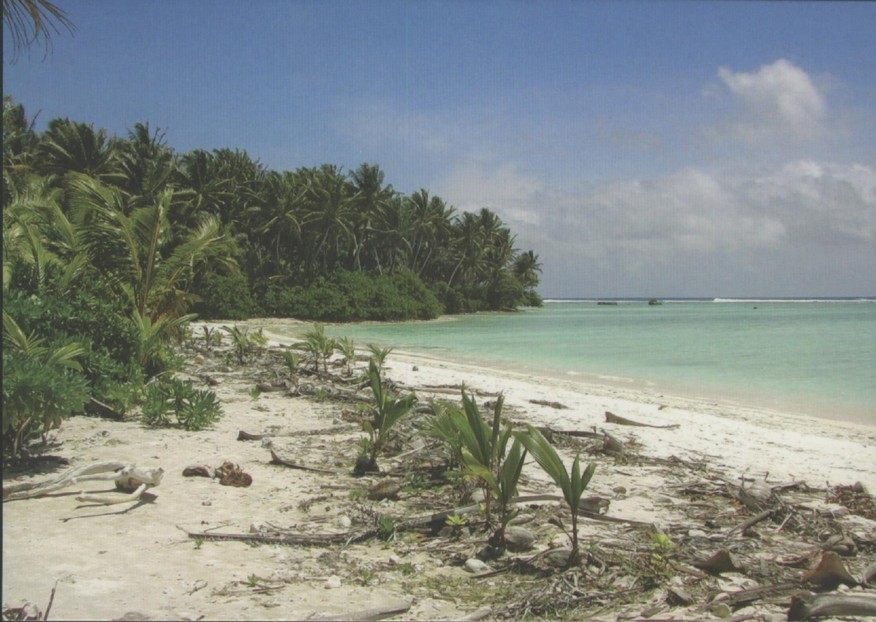
Palmyra Pacifico (USA)
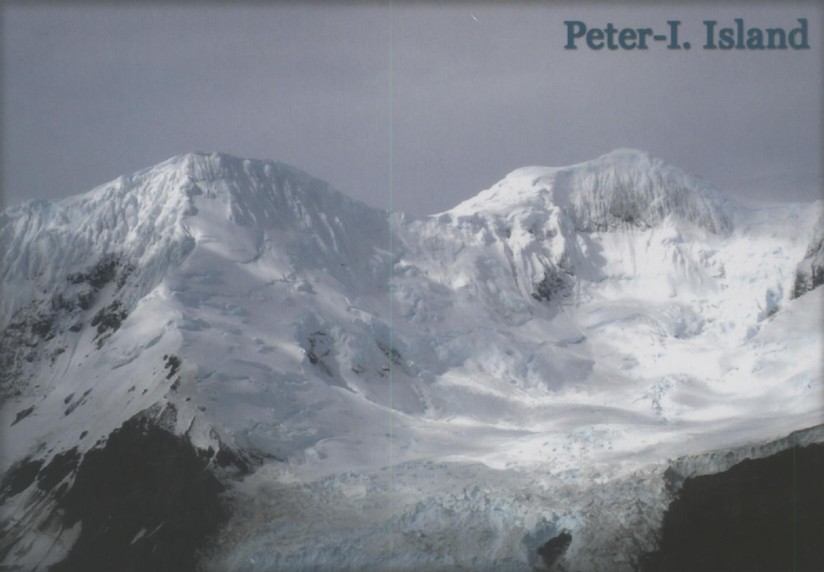
Peter 1° Antartide (Norvegia)
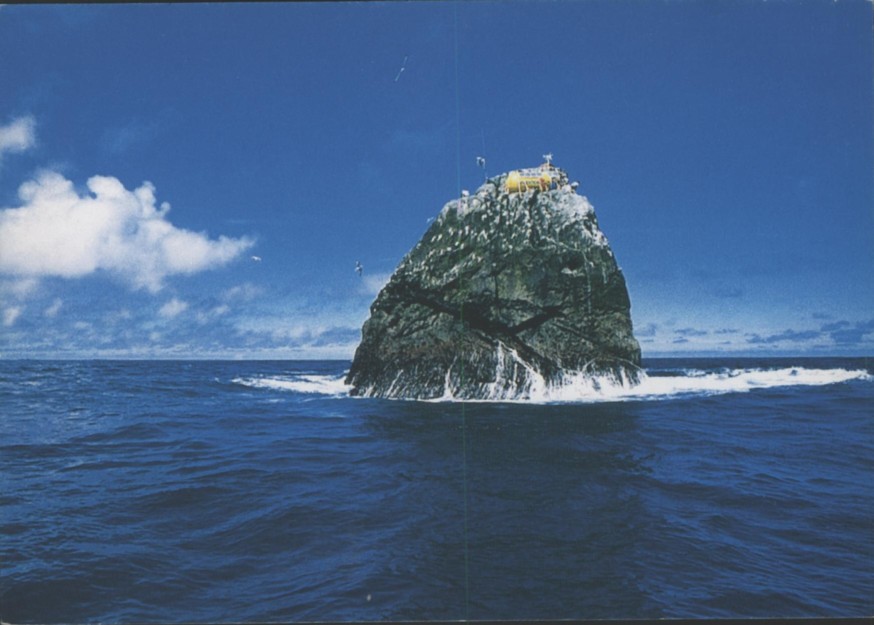
Rockall Atlantico del Nord (U.K.)
Discussione sul Forum:
Inizia sipotràsapere:
|
|
|
Daniele:
Mi sembra che il territorio che costituisce l'isola debba sempre
essere circondato dall'acqua anche durante l'alta marea in modo che possano
svilupparsi delle forme di vita biologica . Dal punto di vista economico, cioè
per garantire lo sfruttamento delle risorse e far valere il diritto marino deve
poter svolgersi sull'"isola" anche una attività economica o esserci un
insediamento umano.
ciao ![]()
![]()
|
Rosalba:
|
|
|
|

lavori in corso
------------------- °°°°°°°°°°°°°° --------------------
Mi
scuso per eventuali imprecisioni, infatti, per risparmiare tempo,
mi sono affidato solo alla mia memoria. Per certo posso fornire le fonti -
sicuramente più attendibili di me - da cui ho tratto le varie informazioni.
Se volete approfondire i vari argomenti, contattatemi. P.S.
Su questo sito potete vedere immagini, articoli e approfondimenti
ai temi discussi nei miei messaggi per il forum Filatelia e Francobolli.
Chi
fosse interessato ai bolli della seconda guerra mondiale, a quelli dei
prigionieri di guerra o di propaganda psicologica, alla resistenza, nonché
alla storia contemporanea, incluse le missioni di pace italiane nel mondo e
quelle scientifiche al polo sud, può visitare le oltre 500 pagine, in italiano
ed in inglese, del sito, cliccando semplicemente sul tasto
"Iniziale" qui sotto. Gli
altri tasti aiutano la navigazione all'interno di questa sezione "le
storie dietro i francobolli" e "Curiosità filateliche". Precisamente:
il sommario riporta gli argomenti trattati in ogni pagina; i tasti dall' 1 al 96
aiutano ad accedere direttamente alle prime xx pagine (12 per volta) ed infine
c'è il link alla corrispondente pagina/pagine del Forum di F&F in cui
lo stesso "topic" è stato discusso. ![]() NOVITA': Se cercate uno specifico argomento ed il Sommario
non è esauriente, potete provare con il nostro motore di ricerca. Esso funziona
all'interno del sito, e può essere utilissimo. Basta scrivere la
parola che si cerca, nel rettangolo qui sotto e cliccare a destra su "find".
La ricerca può essere
fatta con una singola parola, con più parole ed anche con un * alla fine di una
parola se si vuole interrogare sia il singolare che il plurale di una parola.
Per esempio facendo la ricerca con la parola mission*
si cercano tutte le pagine del sito, che contengono le seguenti parole:
missione, missioni ed anche mission, e missions, etc. NOVITA'
NOVITA': Se cercate uno specifico argomento ed il Sommario
non è esauriente, potete provare con il nostro motore di ricerca. Esso funziona
all'interno del sito, e può essere utilissimo. Basta scrivere la
parola che si cerca, nel rettangolo qui sotto e cliccare a destra su "find".
La ricerca può essere
fatta con una singola parola, con più parole ed anche con un * alla fine di una
parola se si vuole interrogare sia il singolare che il plurale di una parola.
Per esempio facendo la ricerca con la parola mission*
si cercano tutte le pagine del sito, che contengono le seguenti parole:
missione, missioni ed anche mission, e missions, etc. NOVITA'
![]() QUI LA SEARCH ENGINE per ricerche all'interno di tutto il sito:
QUI LA SEARCH ENGINE per ricerche all'interno di tutto il sito:
 |
 |
|
|